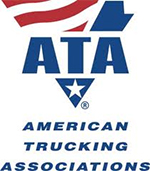American Trucking Associations Takes an In-Depth Review into the Ongoing Truck Driver Shortage

According to American Trucking Associations quarterly report, the turnover rate at truckload carriers surged in the second quarter of 2017 possibly reflecting a tightening market for drivers.
Anyone that wakes up each day in a logistics job that centers around moving freight is more than aware of the fact that there is a significant truck driver shortage.
That is nothing new; in fact, it is far from it.
But that does not mean the driver shortage is viewed as a “whistle by the graveyard” or “nothing to see here” approach. In fact, it is and needs to be the opposite.
This comes into full view when taking a look at a report issued by the American Trucking Associations (ATA), entitled “Truck Driver Shortage Analysis 2017,” which takes a deep dive into the current driver shortage situation, with analysis on where things may be headed and what needs to happen to prevent a bad situation from becoming even worse down the road.
The ATA report, which was authored by ATA Chief Economist & Senior Vice President Bob Costello, noted that from 2015 to 2016 the driver shortage actually declined from 45,000 to 36,500.
While that is encouraging, future numbers may not be as much, though, due to multiple factors outlined in-depth in the report, including an aging driver workforce; lifestyle issues; and regulatory challenges, among others.
So, what about those future numbers? You may want to cover your eyes, as they are not pretty.
According to the ATA, the driver shortage is projected to hit 50,000 by the end of 2017, with the possibility, if things remain the same, that the number could exceed 174,000 by 2026.
Costello pulled no punches in comments accompanying the report in an ATA statement.
“In addition to the sheer lack of drivers, fleets are also suffering from a lack of qualified drivers, which amplifies the effects of the shortage on carriers,” Costello said.
“This means that even as the shortage numbers fluctuate, it remains a serious concern for our industry, for the supply chain and for the economy at large. We experienced a ‘freight recession,’ last year, which eased the pressure on the driver market. Now that freight volumes accelerating again, we should expect to see a significant tightening of the driver market.”
While acknowledging that this is a major issue, Costello noted that carriers are by no means turning a blind eye to it, as they are being proactive to make a bad situation better.
This is happening, he explained, in the form of pay increases for drivers along with offering other incentives, fleets working to improve both the image and lifestyle of truck drivers, policy efforts focused on lowering the driver age as part of a graduated licensing system, and easing the transition for veterans to get into the driver’s seat.
The projected shortfall of 50,000 drivers by the end of this year would stand as “the highest level on record,” according to the report. This is due to a pairing of recovering freight volumes and the transition to electronic logging devices to track drivers’ hours.
Perhaps one of the most telling stats included in the report is that 70.6% of freight tonnage moves on U.S. highways, as per the ATA’s Freight Transportation Forecast 2017 to 2028, which was released earlier this year. Another stat is that 43% of trucking’s operational costs are allocated towards driver compensation and stands as the largest operational cost for a motor carrier.
Costello also wrote, “as volumes increase, the existing driver pool is only more strained.” Could that be any more spot on?
Not to be overlooked is the quality of candidate either, with the report explaining that the current shortage seems even worse to carriers than the current figures suggest because of a quality versus quantity issue.
It said that this is because many carriers have strict hiring criteria based on driving history, experience, and other factors. This becomes further magnified through the ATA’s Benchmarking Guide for Driver Recruitment & Retention, which cites how in 2015 88% of fleets indicated they were getting enough candidates but the majority were not qualified, something which ATA says has not likely changed since then either.
When it comes to the seemingly endless truck driver shortage, it feels like things will never change. But here is the thing: they can and really need to or we will all be feeling the collective pain.
The ATA does a great job in laying out the facts, projections, and potential solutions, too. Do yourself a favor, take some time to read this analysis and become part of the solution, not part of the continuing problem.
Sources
Six Stats That Reveal The State Of The U.S. Trucking Industry
Money, happiness and truck driver pay
Investigative Report: 2016 Trucking Industry Forecast/Expectations
August 4, 2016, ATA Releases Latest Edition of American Trucking Trends
September 1, 2016, Turnover at Large Truckload Fleets Falls to Lowest Point in Five Years
U.S. Bureau of Labor Statistics Heavy and Tractor-trailer Truck Drivers
The Salary Scale for Truck Drivers
Providing pay, perks, and more to retain safe truck drivers
October 6, 2015, New ATA Report Shows Growing Shortage of Qualified Truck Drivers
Related Article: Technology Key to Addressing Driver Shortage
Related White Papers
Beyond Shovel-Ready: The Extent and Impact of U.S. Infrastructure Jobs
This report sheds new light on the widespread contributions that infrastructure jobs make to the nation’s economy, including their importance at the metropolitan level. Download Now!
Mapping Freight: The Highly Concentrated Nature of Goods Trade in the United States
This report sheds new light on the widespread contributions that infrastructure jobs make to the nation’s economy, including their importance at the metropolitan level. Download Now!
Self-Driving Vehicles in Logistics
This report sheds light on various best-practice applications of self-driving vehicles in various industries today, and also reveals a detailed look into the use cases of self-driving vehicles across the entire logistics value chain. Download Now!
Your Guide to Upcoming Trucking Regulations
New regulations are anticipated to decrease the driver pool and truck capacity, which could ultimately disrupt over-the-road shipping, this paper is a guide to understanding and navigating the driver shortage and trucking regulations. Download Now!
Truck Driver Shortage Analysis
According to analysis by the American Trucking Associations, the shortage of truck drivers has grown to nearly 48,000 and could expand further due to industry growth and a retiring workforce. Download Now!
Article Topics
American Trucking Associations News & Resources
Trucking industry balks at new Biden administration rule on electric trucks: ‘Entirely unachievable’ Groups warn of $1 trillion cost for electrification of America’s trucking industry New coalition is focused on fighting new Labor Department independent contractor rule ATA data points to truck tonnage declines to start 2023 December Truck tonnage ends 2023 with a modest gain, reports ATA ATA warns of ‘tangled mess’ due to latest Labor Department independent contractor ruling November truck tonnage is down, reports ATA More American Trucking AssociationsLatest in Transportation
Talking Supply Chain: Doomsday never arrives for Baltimore bridge collapse impacts Amazon Logistics’ Growth Shakes Up Shipping Industry in 2023 Nissan Channels Tesla With Its Latest Manufacturing Process Why are Diesel Prices Climbing Back Over $4 a Gallon? Luxury Car Brands in Limbo After Chinese Company Violates Labor Laws The Three Biggest Challenges Facing Shippers and Carriers in 2024 Supply Chain Stability Index: “Tremendous Improvement” in 2023 More TransportationAbout the Author






















